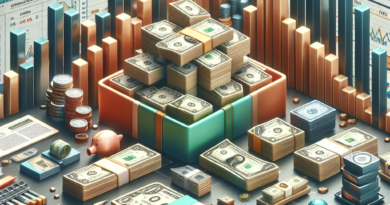The "no recession" scenario is possible for the USA but the risk of stagflation increases. Is China becoming investable again?
The previous article reported the call from Apollo Global economist Torsten Slok on the possibility that the Fed might not make cuts for the current year.
As we have seen, the resilience of the American economy continues to be strong despite the slowdown in Services activity which appears to be compensated by the recovery in Manufacturing activity.
Furthermore, the latter is observing a global recovery dynamic with the exception of Europe which is suffering from excessive regulation, the difficulties (so far) of China and the upward repricing of energy supply.
If so far there has been debate about the fact that there was excessive enthusiasm for various rate cuts by central banks, enthusiasm which then spilled over to equities, why does equity continue to be an object of purchase among global investors? An interesting answer to this question was given by JpMorgan which does not believe that the stock market requires rate cuts to perpetuate the bullish phase since the current (American) GDP growth above the trend continues to translate into profits of the most stronger than expected.
This fact maintains investors' appetite for risky assets according to the US investment bank.
In addition to JpMorgan's interesting point, it must be considered that statistically a rate cut should not be that long awaited.
Examining the Fed's rate cycles from the 1970s to today actually revealed that on average the S&P 500 achieved a 5% rise in the 100-day period between the last monetary tightening and the first rate cut.
The largest decline was 23% in the 200-day range after the first rate cut.
In reality, this is explained by the fact that share valuations are inversely correlated with the volatility of bond yields since lower rate volatility means greater liquidity available to invest elsewhere due to a lower demand for collateral.
The main risk is that an unexpected event could lead to a rapid decline in share prices mainly because they are too "crowded" as noted by JpMorgan's Chief Global Equity Strategist, Lakos-Bujos.
By "unexpected event" the US bank economist means the fact that much of the good news has already been priced in while the negative news has not yet been taken into consideration by investors and the excessive crowding of American stocks could lead to a violent decline and unexpected.
Indeed, the crowding referred to by the JpMorgan strategist is clearly visible from the concentration by capitalization among the top 10% of the largest US stocks.
Not only that, as mentioned in previous reports, the preference for Growth over Value was thought to be successful because the US economy is still in an expansionary phase with a tolerable level of inflation but we may have reached the moment in which to make a switch between Value and Growth.
Does this mean that we are facing the top of the stock market? It is still too early to say because although it is true that a lot of good news has been incorporated into prices, it is also true that the stability of the American economy is pushing corporate profits and consequently share prices.
What could "go wrong" is that the global economic recovery, with the exception of Europe, is pushing commodity prices higher again with oil returning to high price levels.
Black gold could incur a deficit as hypothesized by the International Energy Agency in mid-March due to production cuts wanted by OPEC+ together with an improvement in demand.
The rebound in commodities could therefore lead to a scenario of economic slowdown, with nominal US GDP growth below 2% and inflation in a range between 3% and 4%.
The movement of Gold in recent times, beyond geopolitical risks and central banks' appetite for the precious metal, reinforces this view as highlighted by Michael Hartnett, Chief Strategy Officer of Bank of America Global.
For the US economist, Gold is discounting a significant decrease in real rates since these metal price levels mean 10-year real rates of -2%.
The economist argues that investors are hedging the risk that the Fed will cut rates as inflation accelerates and also that the central bank may end monetary measures to finance the huge federal deficit.
We can agree that the real risk in the coming months is that of slowing growth and inflation remaining at levels above 3% in the States, thus implying a stagflation scenario for the American economy.
At present we are still far from this scenario coming true, much will depend on the choice that the Federal Reserve will make at its next meeting in June and the estimates that the FOMC will develop for investors.
At the moment the majority of investment banks have aligned themselves with the rate expectations provided by the Fed, predicting a first cut in June.
It is difficult to hypothesize, given what we have seen previously, that the Fed will cut rates this summer.
It is more conceivable that he will try to shift expectations for a cut in September.
The ECB, on the other hand, could actually make a first cut as early as next June due to a marked deterioration in the European economy and flat wage growth which allows the EuroTower to act with fewer worries about a rise in inflation.
In these market conditions, at the moment Quality Growth continues to be preferred to Value, maintaining a focus on large capitalization companies.
Cyclical equity could perform better due to the current global economic recovery, even Defense stocks remain interesting due to geo-political tensions and the willingness of the governments of the main economies to allocate greater spending on Defense.
In geographical terms, the United States remains the favorite while in Europe the lists of peripheral countries remain more interesting and China could also be an investment idea given the current improvement in the economy and the support of local authorities for the recovery.
On bonds it is always preferable to maintain a duration of no more than 2-3 years, in the case of European bonds the average maturity could be increased without however going for durations that are too long.
Currently, High Yield could continue to perform better than Investment Grade.
The emerging market bond segment is also interesting as it offers a high return with good issuer risk profiling and a duration that is not too long.
Gold and Silver are likely to continue to rise due to the underlying forces that drive their prices, the latter is preferable to the former having remained further behind in the rise in prices.
The prices of agricultural goods should also be monitored as they could also restart with the increase in energy costs as well as uranium where a supply deficit persists.
read also Amazon: boom or crash? Critical analysis and forecasts




